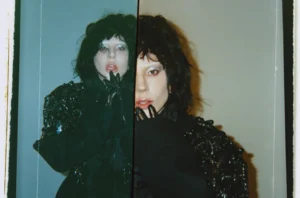What does Wearing a Scarf Symbolize?
Wearing a scarf can symbolize various meanings and serve different purposes across cultures, religions, and personal choices. Here are some common symbolic meanings associated with wearing a scarf:
Modesty and Religious Observance:
In many religious traditions, wearing a scarf, such as a hijab in Islam or a headscarf in Christianity, symbolizes modesty and adherence to religious principles. It serves as a visible expression of one’s faith and commitment to a particular set of beliefs.
Cultural Identity:
Scarves are often used to represent cultural identity. Different communities may have specific styles of scarves that are emblematic of their heritage. Wearing a culturally significant scarf can be a way of expressing pride in one’s roots and traditions.
Fashion and Style:
Head scarves are widely recognized as fashion accessories that can add flair and style to an outfit. The way a head scarf is worn, its color, pattern, and material can convey a person’s sense of fashion, creativity, and individuality.
Seasonal Adaptation:
Depending on the climate and weather conditions, scarves are worn for practical reasons. In colder seasons, scarves provide warmth, and their use can symbolize a response to environmental factors rather than a specific cultural or religious meaning.
Expression of Personality:
Scarves offer a versatile canvas for personal expression. The choice of scarf—whether bold and vibrant or subtle and neutral—can reflect a person’s mood, personality, and preferences. It’s a way to showcase individuality within the realm of personal style.
Symbol of Affection or Support:
Scarves can be symbolic gifts exchanged between individuals. They may represent a token of affection, support, or solidarity. For example, the practice of sharing scarves during times of illness or as a gesture of friendship is not uncommon.
Professionalism:
In certain professions, scarves are worn as part of a uniform or to convey a sense of professionalism. This is common in fields such as aviation, hospitality, and healthcare, where scarves may be part of a standardized dress code.
Ceremonial and Formal Occasions:
Scarves are often worn during ceremonial or formal events. In these contexts, they may symbolize respect, formality, or adherence to specific dress codes.
It’s important to recognize that the symbolism of wearing a scarf can vary widely based on individual choices, cultural contexts, and personal beliefs. The same type of scarf may carry different meanings for different people, making it a versatile and culturally rich accessory.
A Guide on How to Pair Scarves with Outfits
Scarves are versatile accessories that can effortlessly elevate your style and add a touch of sophistication to any outfit. Whether you’re dressing up for a formal occasion or looking to spice up your everyday wear, knowing how to pair scarves with different outfits is a skill that can enhance your fashion game. In this guide, we’ll explore various scarf styles, materials, and creative ways to incorporate them into your wardrobe.
Understanding Scarf Styles:
The first step in mastering the art of pairing scarves with outfits is understanding the different styles available. From the classic rectangle scarf to the trendy infinity scarf, each style offers a unique way to enhance your ensemble.
Rectangle Scarves:
These are the most common and versatile scarves. They can be draped in various ways, making them suitable for both casual and formal occasions.
Infinity Scarves:
These scarves are circular and have no end. They provide a cozy, layered look and are perfect for colder seasons.
Square Scarves:
Square scarves can be folded and tied in different ways, offering a chic and polished appearance.
Choosing the Right Material:
The material of your scarf plays a crucial role in determining its suitability for different outfits and seasons. Here are some common scarf materials and their ideal pairings:
Cotton:
Ideal for warmer weather, cotton scarves are light and breathable. They complement casual outfits and can be draped loosely for a relaxed look.
Wool:
Perfect for colder months, wool scarves provide warmth and comfort. They pair well with both casual and formal attire, adding a touch of sophistication.
Silk:
Silk scarves exude elegance and are perfect for formal occasions. They can be worn with dresses, blouses, or even as a stylish accessory for a handbag.
Cashmere:
Luxuriously soft, cashmere scarves are a statement piece that adds refinement to any outfit. They work well with both casual and dressy looks.
Matching Colors and Patterns:
To create a harmonious and polished appearance, it’s essential to consider the colors and patterns of both your scarf and outfit. Here are some guidelines to keep in mind:
Complementary Colors:
Pair scarves in complementary colors with your outfit to create a balanced and visually appealing look. For example, a red scarf can enhance a green or navy outfit.
Neutral Tones:
Neutral-colored scarves, such as black, white, or beige, are versatile and can be paired with almost any outfit. They are timeless and add a touch of sophistication.
Pattern Mixing:
If your outfit is relatively simple, you can experiment with patterned scarves to add a playful element. However, avoid overwhelming patterns if your clothing already has intricate details.
Draping Techniques for Different Outfits:
The way you drape your scarf can significantly impact your overall look. Here are some popular draping techniques and how to pair them with various outfits:
Classic Drape:
Simply drape the scarf around your neck, leaving the ends hanging down the front. This works well with both casual and business-casual attire.
Loop and Tuck:
Loop the scarf around your neck and tuck one end through the loop. This technique adds a touch of elegance and is suitable for dressier occasions.
Blanket Scarf Style:
Fold a large square scarf into a triangle and drape it over your shoulders. This cozy style is perfect for casual outings and adds warmth to your ensemble.
Infinity Loop:
Double-loop an infinity scarf around your neck for a snug and stylish look. This works well with both casual and semi-formal outfits.
Seasonal Considerations:
It’s important to adapt your scarf choices based on the season. Lightweight scarves are ideal for spring and summer, while heavier materials like wool and cashmere are better suited for fall and winter. Additionally, consider the color palette associated with each season to create a cohesive and season-appropriate look.
Conclusion:
Pairing scarves with outfits is an art that allows you to express your style and creativity. By understanding different scarf styles, materials, and draping techniques, you can effortlessly elevate your fashion game. Experiment with colors, patterns, and textures to find the perfect balance that complements your personal style. With the right scarf, you can turn a simple outfit into a fashion statement and showcase your unique personality. So, embrace the versatility of scarves and let them become an essential element of your wardrobe.







